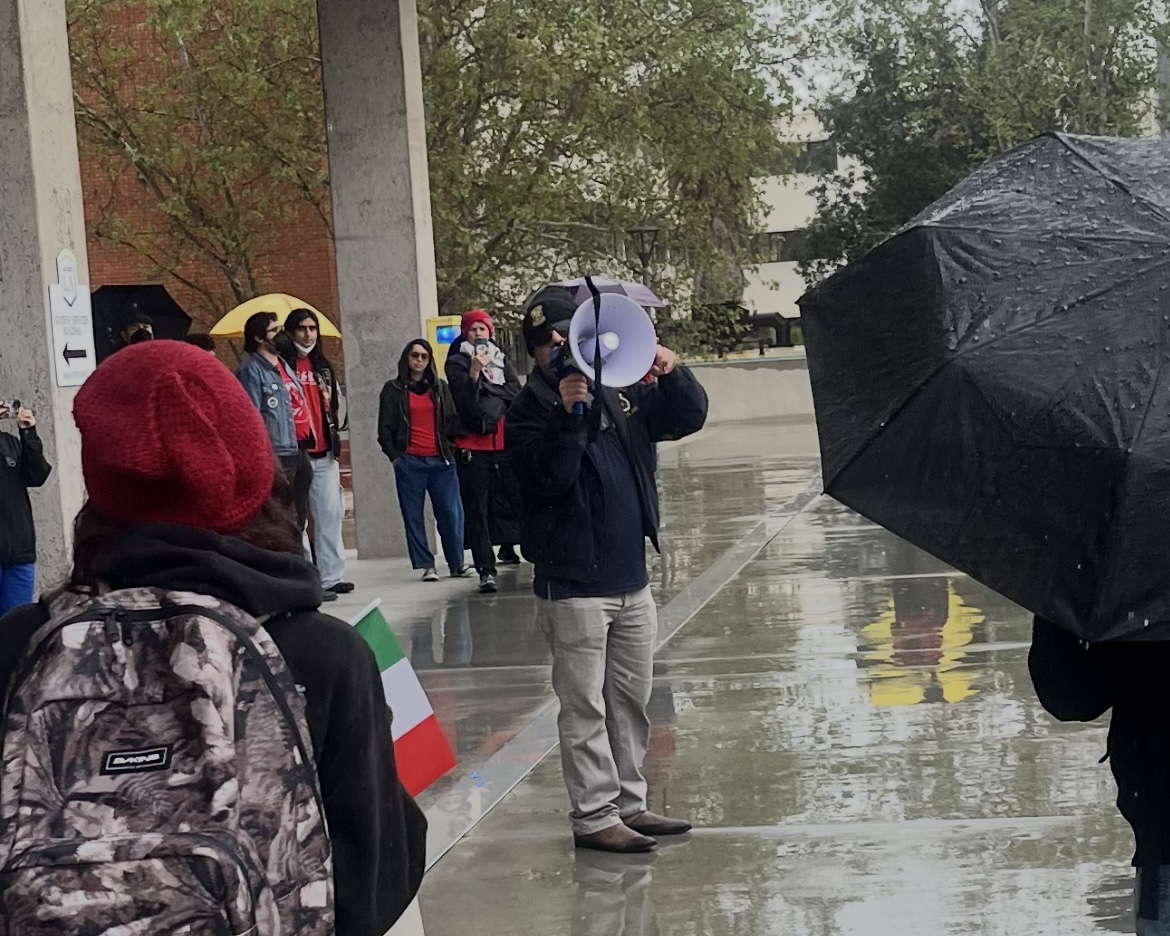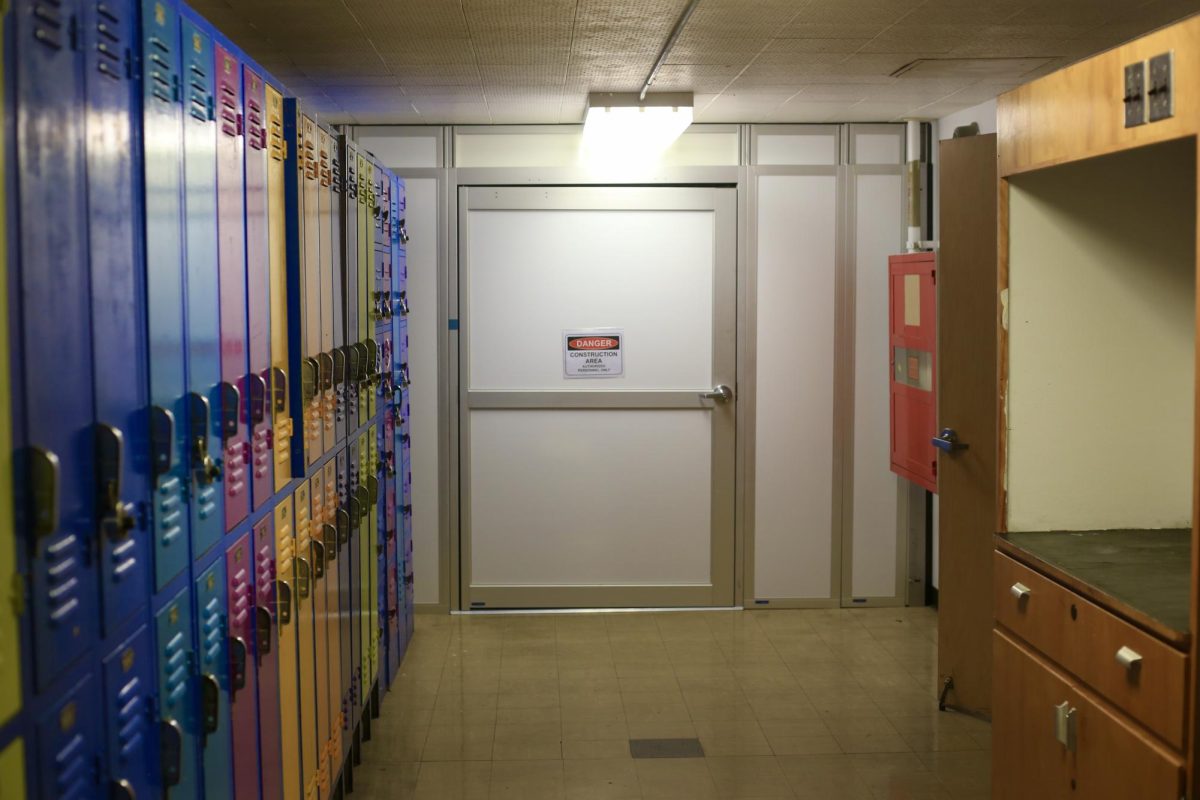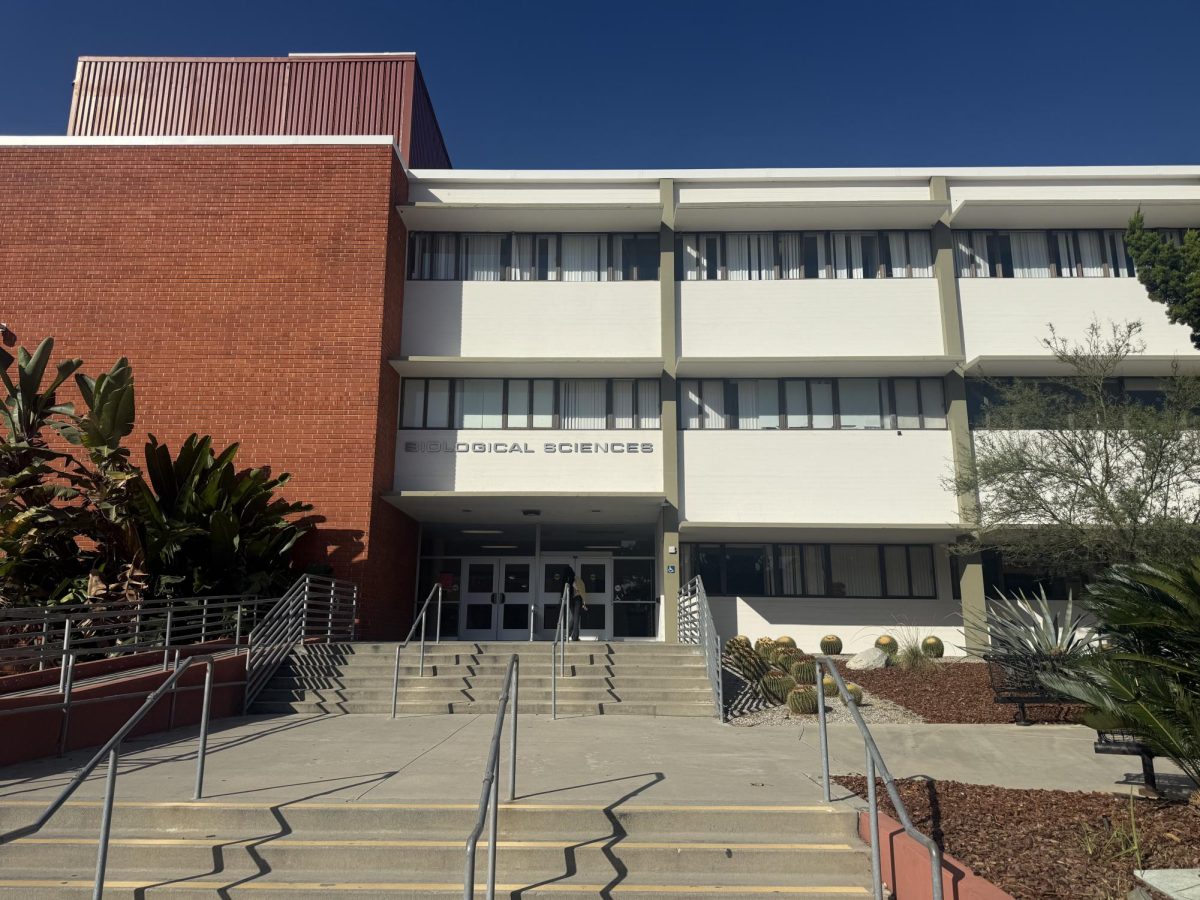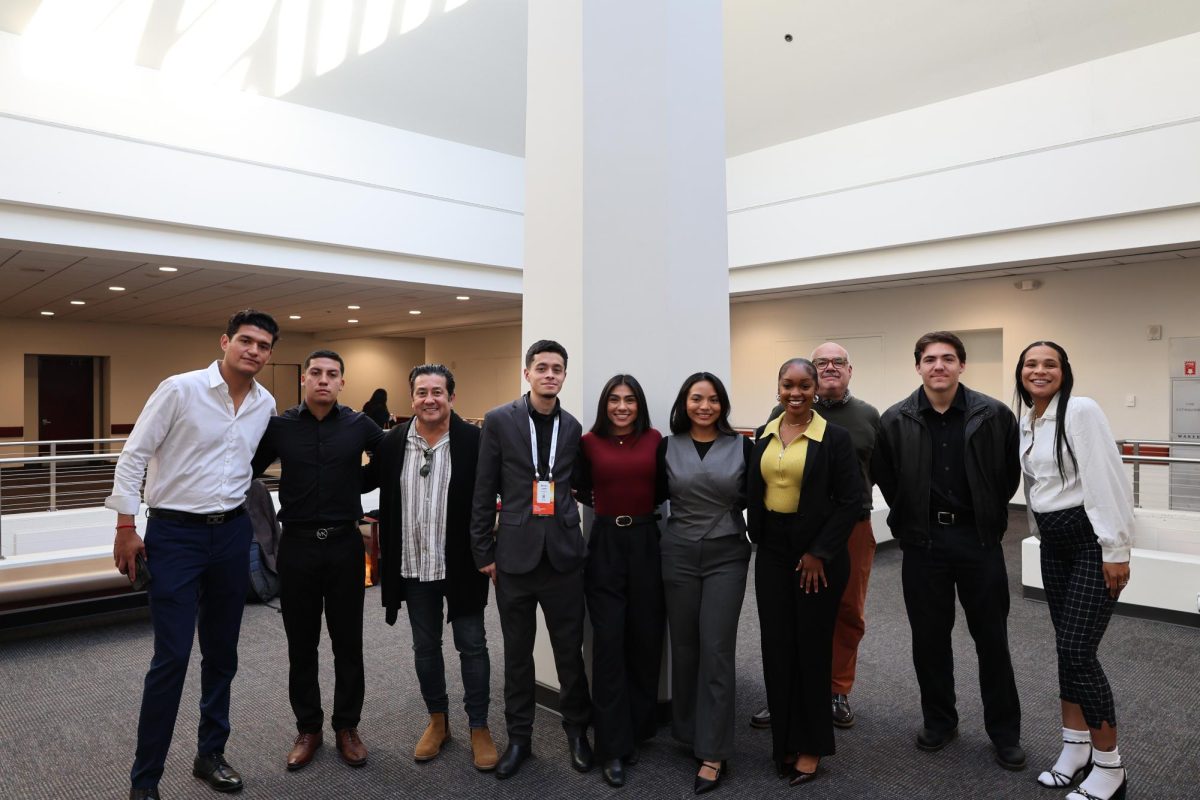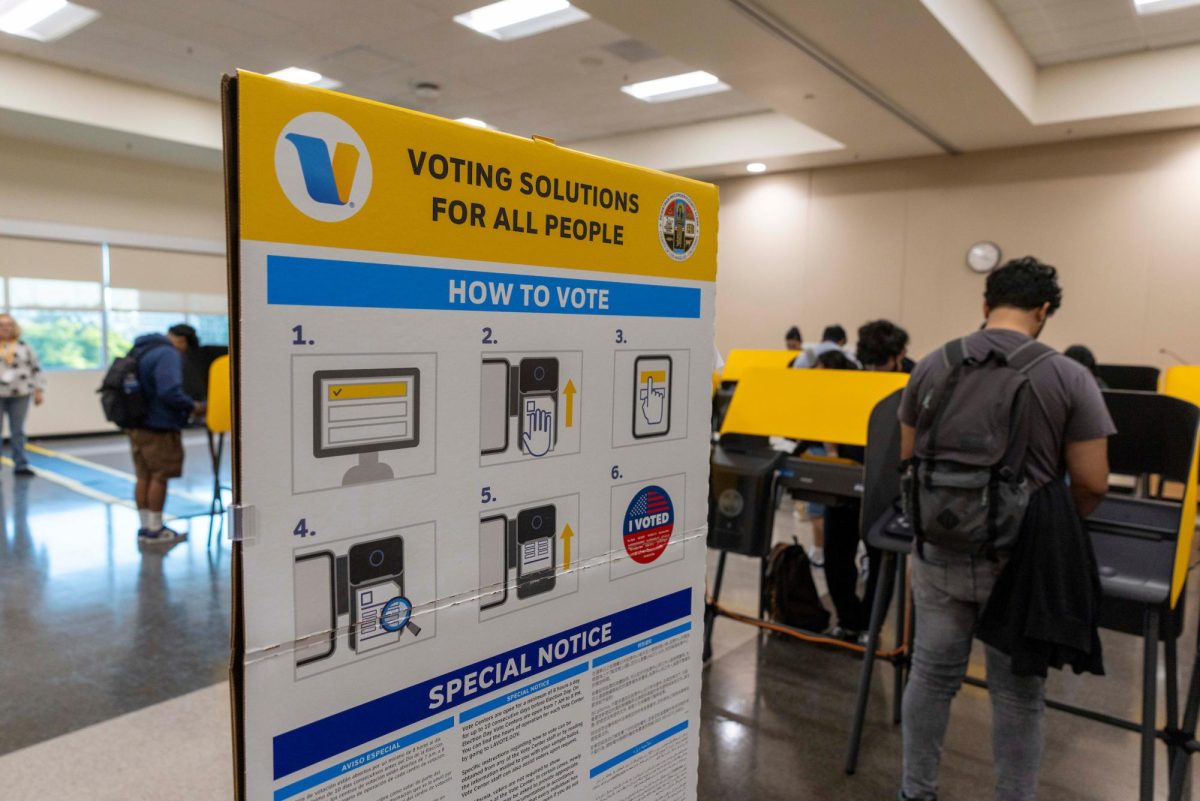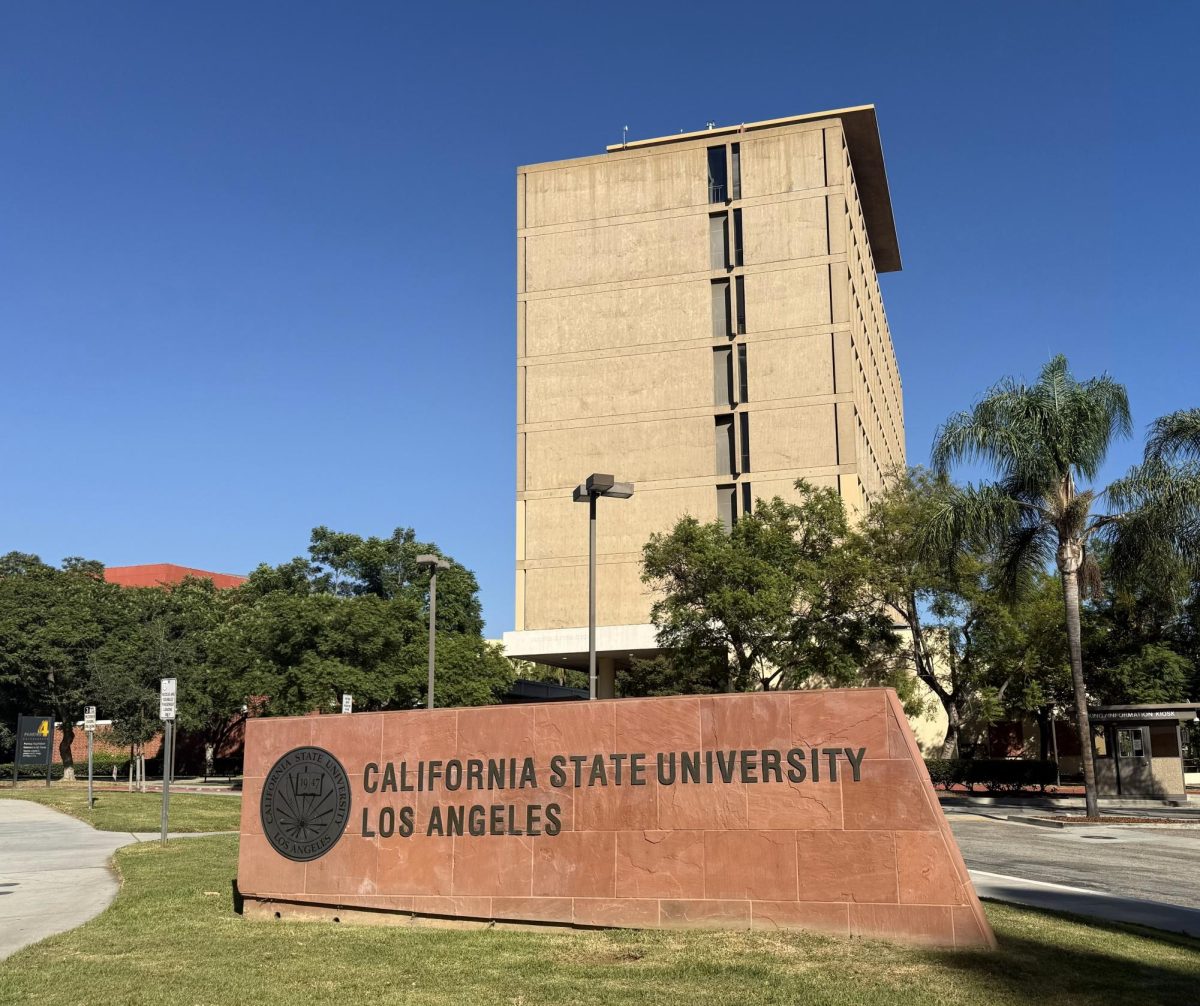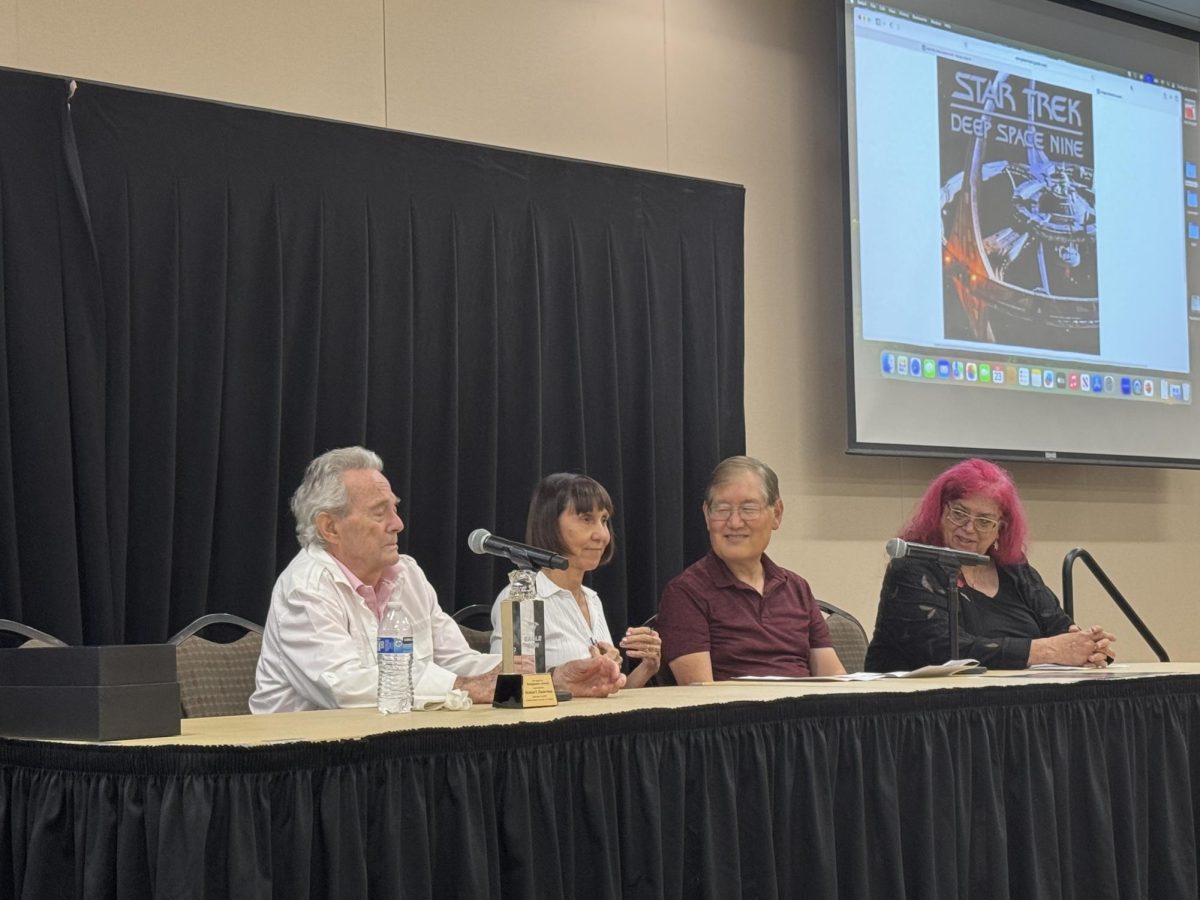Dawn Dennis, a lecturer in the history department at Cal State L.A., was nominated for the 2025 “Lecturer of the Year” award in early February. Less than a few weeks later, she said her department emailed her saying that she and other lecturers may soon be effectively let go — not given courses to teach — due to budget cuts.
That was upsetting, she said, and it made her feel the CSUs are no longer “human-centered.”
Announcements by the university in recent weeks have shaken faculty. Cal State L.A. officials have said the university faces a $32 million budget cut this academic year due to falling enrollment; increased, unfunded expenses; and state budget cuts, among other issues. An additional 10%, or $24.6 million, budget cut is projected for the 2025-2026 school year.
In response, Cal State L.A. plans to, among other actions, defer most capital projects and restrict most non-essential travel and purchases such as equipment, software, hospitality and training.
“While the continuing hiring freeze and these added steps will assist in addressing the structural deficit, layoffs may be necessary,” Interim Vice President and Chief Financial Officer Claudio Lindow wrote in an email last month. “There are difficult decisions ahead as we continue to navigate financial challenges. Yet, our commitment to student success, academic excellence, and a thriving campus community remains unwavering.”
Erik Hollins, Cal State L.A.’s director of strategic communications, said that mandatory unfunded rising expenses include funds for Title IX and anti-discrimination, Harassment, Retaliation (DHR) program recommendations, support for enrollment initiatives to close equity gaps, to improve compensation, and achieve a more sustainable financial model for the school. Hollins said another issue is that a previously promised 5% annual increase to the school’s base budget is now being postponed and it was “essential to meeting negotiated compensation increases and other growing obligations without even further increasing fees.”
“Our largest challenge is the increasing expenses with insufficient state support, underfunding from the State of California. Our largest expenses are the well-deserved increases in employee salaries and total compensation,” Lindow wrote. “Though compensation increases are important for recognizing the value of our faculty and staff, the $25 million needed to cover compensation is a substantial financial impact. To fulfill this obligation, the state has only committed $8 million in funding, leaving us an unfunded gap of $17 million.”
Lindow noted there are added uncertainties related to the federal government’s plans to freeze federal funding for various programs. He added that Cal State L.A.’s longer-term deficit is related to a 16% decline in student enrollment, from 27,032 students in 2021 to 22,740 more recently: “Fewer students result in lower tuition income and less resources available to cover our operational costs.”
According to another email received two days later from Interim Provost Amy Bippus, the sweeping cuts could lead to courses continuing to be cut next year, as they were this year. This could mean increased course sizes, the suspension of graduate programs enrolling 15 or fewer students, and possibly the elimination of entire majors or programs and laying off tenured and non-tenured professors in those areas — similar to what’s happening at Sonoma State. That means students would have fewer choices when it comes to classes and areas of study, and students currently enrolled in certain programs may not get the classes they need to graduate in time.
“The state has proposed a devastating $375 million permanent cut to the California State University. That’s a nearly 8% reduction in state funding to a system that serves nearly half a million students and not only employs 63,000 Californians but graduates approximately 127,000 educated and skilled people into the workforce every year,” said Amy Bentley-Smith, director of the CSU system’s media relations office. “Cuts of this magnitude threaten the critical progress the CSU has made to improving student success. The CSU is strongly advocating on behalf of all students and employees for the state not to make these significant cuts that will affect access to higher education and the economic futures of so many Californians.”
At Cal State L.A., officials have said that it’s not just focused on reducing staff and course sizes but also looking to expand its revenue stream. These include options like enrollment growth, external funding, self-support programs, public-private partnerships and auxiliaries, which are another form of support programs.
The CSU system has already cut nearly 1,200 workers since 2023, including unfilled positions due to voluntary departures. Dennis said it feels like the CSU chancellor’s office is running the CSUs less like schools and more like businesses, given that many millions of dollars have been sent to consulting firms in recent years and hefty salaries and raises have been paid to executives.
The CSU chancellor’s office rebutted the allegation. “Historically, management employees have represented less than 10% of all employees, and account for approximately 16% of the system’s salary expenditures,” Bentley-Smith said, adding that 70% of the CSU system’s operating budget goes to instruction, academic and student support and financial aid while just 15% of the budget is for non-instructional and non-student support management. “That proportion of spending has essentially stayed the same since 2018.”
As the responsibility to find potential cuts falls to various departments, many within them have struggled to wrap their heads around how the school can keep cutting. Animation professor Zachary Zezima said the art department was already struggling after previous cuts.
“We have nothing left to cut after the past two or three years of cuts,” Zezima said. “It will affect our part-time lecturers the most. They are treated as disposable, creating a sense of instability.”
These part-time lecturers are the first to go on the chain in terms of firing based on Article 38 in the CFA bargaining agreement signed in 2022. What determines these positions is the length of their contract and appointment. The least protected part-time lecturers are those who have been on staff for less than three years and without a full-time appointment.
But according to Dr. Scott Wells, the university is also considering freezing programs, which would allow it to save even more money because of the wages and benefits earned by tenured professors in those areas who would potentially be cut.
The university has already cut down to the bone, Dr. Heidi Riggio said. As vacancies for staff and faculty remain unfilled, the responsibilities required to serve students don’t disappear, she said. The work falls on the backs of the existing faculty, many of who end up effectively doing several jobs to ensure students don’t lose out on opportunities.
“You’re going to have to pick up the slack, so again, they’re increasing the workload of the staff to make up for these vacant positions,” Riggio said. “They’re not going to hire new people. Instead, they’re going to increase the workload of the staff that we already have, which is really unfair.”
In the email sent to faculty, the provost pointed out several programs and funds that could be frozen while the colleges figure out what has to be cut. For instance, some colleges and departments are putting a pause on reassigned time or supervising units or “s-factor” units, which are for professors who oversee different programs and activities. These professors can either use the units to offset the usual number of courses they have to teach – four for many colleges at Cal State L.A. – or they can “bank” the units to use later, during more challenging semesters when they need to balance their workload.
“They told us last week, the deans did, that we cannot schedule faculty with banked s-factor,” Riggio said. “But these units have already been earned. The faculty have already done the work. It’s like, ‘Do the work now and we’ll pay you later.’ But the administration is trying to deny the units that have already been earned. They’re trying to deny the faculty the ability to use those units and the chairs and NSS we said, ‘No, we’re not doing that.”
When asked about this, Hollins shared that “Neither VP Lindow’s nor the Provost’s message say anything about banked S-factor units. Nor does any other University leadership communication on the budget.” Hollins added, “In fact, the Provost’s Office is working with deans and department chairs to continue to make available personalized learning experiences for students within budgetary constraints.”
While the cuts will likely affect all academic colleges, it appears they will be based on several factors. This includes enrollment percentage, as well as outside funding that certain colleges can take advantage of.
“For example, the College of Business and Economics (B&E) has other sources of revenue to buffer the budget cuts,” said a department chair, who asked to be unnamed for fear of retaliation as a manager. “This is largely due to the fact that for decades, upper administration has imposed a higher Student-Faculty Ratio (SFR) on some Colleges but not others.”
Amid the changes, CSU faculty and staff unions – the California Faculty Association (CFA), the California State University Employees Union (CSUEU) and Teamsters Local 2010 – held a protest on March 5. Professors and students gathered on campus to make their voices heard, holding up assorted signs, including one that read, “Million-Dollar Millie,” referring to CSU Chancellor Mildred Garcia, who earns a seven-figure salary.
Students in attendance like Derrick Munoz, a computer science major and student worker in the ID office, shared their frustrations with what they say is a state administration focused more on money than on delivering a quality education – even amid the CSU system’s 34% tuition hike over five years that started taking effect last fall.
“I just see how unjust and unfair the conditions are that student workers are forced under. Like having 18 credits a semester, trying to work 20 hours a week, but getting paid below minimum wage,” Munoz said. “They already know that we’re students. We already have to pay the insane tuition prices they set. . . It’s never been students first. It’s always them, it’s always the corporate corporations that sponsored them and it’s always the higher-up admins.”
One of the speakers at the protest was student organizer Ashley Gregory, who works with the Students for Quality Education (SQE). The group works with groups like the faculty union, CFA, to ensure that students are getting the education they deserve across the CSU system.
While the cuts impact faculty, they’ll arguably affect students even more, according to SQE. The potential programs being trimmed or even cut puts students in a state of limbo, unsure when they’ll be able to finish their degree.
“These faculty cuts, and the course cuts that go alongside them, will only make students less safe. It will stall graduation times, and prevent people from receiving the education that they deserve,” Gregory said.
In response, Hollins shared an excerpt from a message from VP Claudio Lindow, “We recognize the centrality of the academic enterprise for the university. As we consider ways to reduce our expenditures, we must maintain a high-quality educational experience for our students in a safe environment.”
Ali Tweini, co-chair of the Teamsters Local 2010 political action committee, echoed a similar sentiment, focusing on Cal State L.A.’s mission to train and educate future Californians, members of a responsible and informed public as well as the state’s workforce.
“Any reduction to any programs for students is a bad idea because we are building the next generation of students,” Tweini said. “They are the future, and cutting down their programs will take away from the future of their education.”
A major talking point at the event was the CSU system’s decision to pay $17 million for artificial intelligence tools. Combined with the timing of cuts and layoffs, the purchase made many feel the CSU system is out of touch.
“When I was a junior faculty person, I saw a presentation that was given at Cal State Fullerton by some consulting group and there was a slide in the presentation and it said, ‘faculty member of the future,’ and it was a robot,” Riggio said. “It [might as well have] said, ‘No salary, no pension, no tenure, no union, no grievances, no shared governance.’ They don’t have to listen to us.”
All of this is set against the backdrop of a ticking clock, the late June deadline for a budget submission for the 2025-2026 academic year. As groups across campus protest, their rallying cry is their message: “No. More. Cuts.”
This story was cross-published at local news outlet Boyle Heights Beat’s website, boyleheightsbeat.com.

